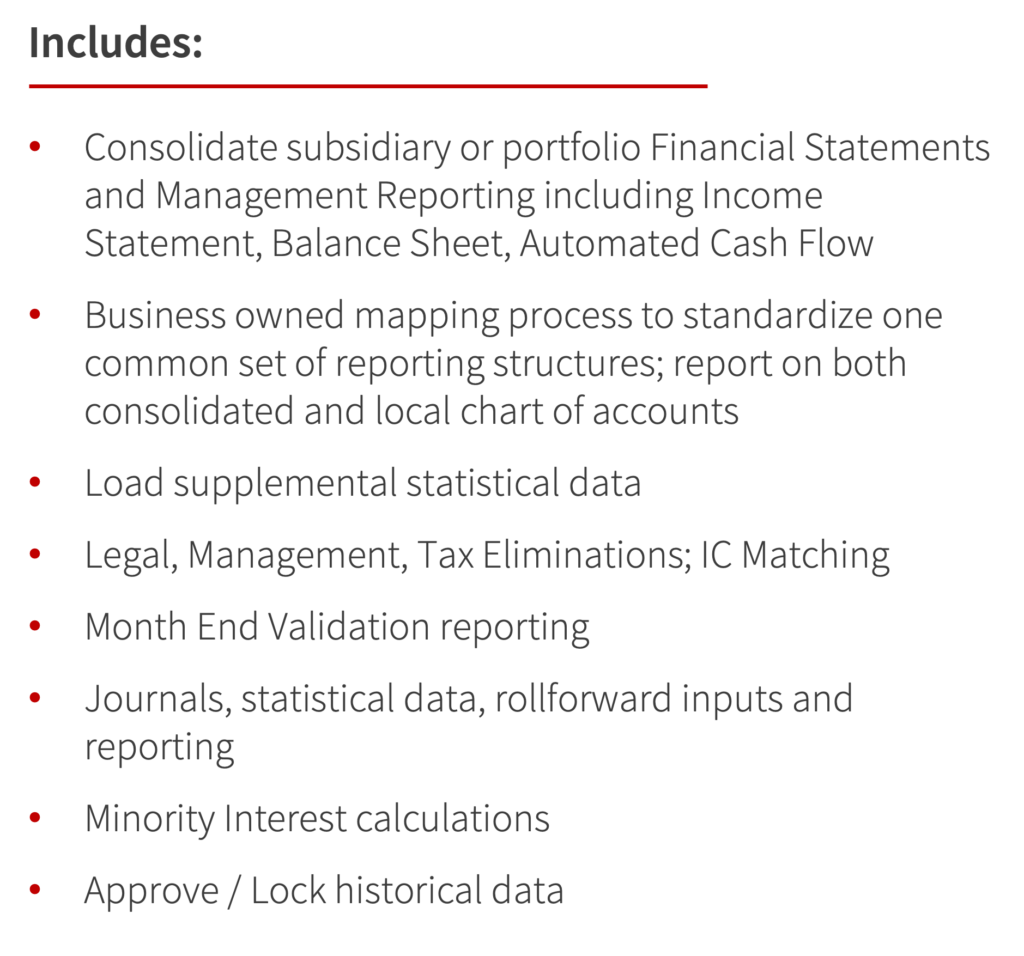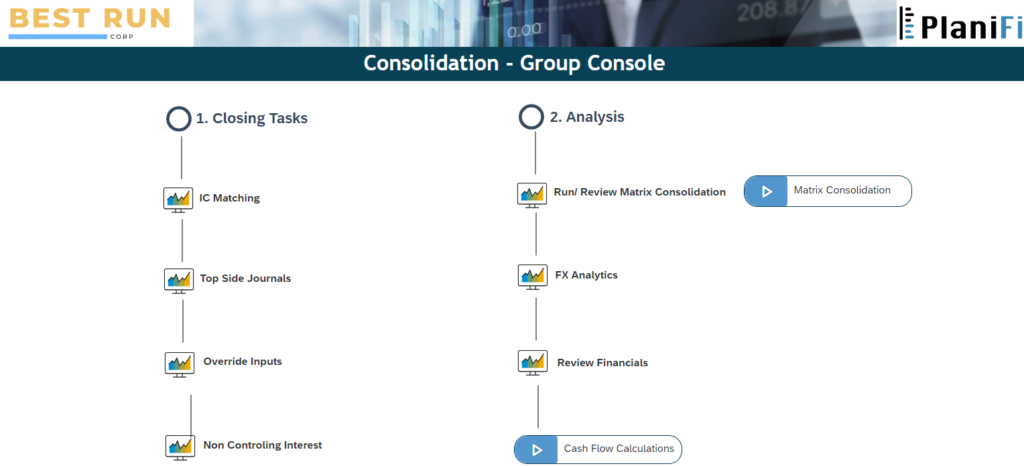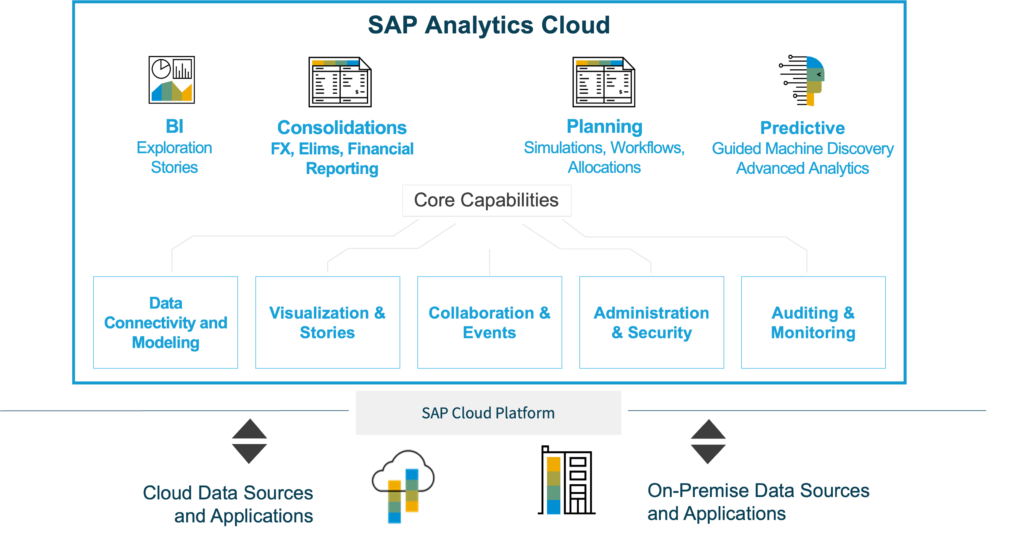September 27th, 2024
Jason Reid
Introduction: Financial Consolidation with SAC
Let me start this blog with a very clear representation of its positioning. Our partner and sister company PlaniFi Platform Analytics has built a Financial Consolidation with SAP solution that will provide customers with a single platform to perform Business Planning and Consolidations (if desired in a fully managed platform environment – just like BPC in its core)
Okay, with that statement out of the way. Let me walk through why I believe that statement to be accurate. To do that, I will examine consolidations functionality in the context of SAP’s Business Planning and Consolidations (BPC) and SAP Analytics Cloud (SAC), and for that matter Financial Consolidation with SAC.
Understanding SAP Business Planning and Consolidations (BPC) Success
To begin I’d like to start with a quick review of BPC’s success:
- I could represent how its foundation in Excel delivered Planning and Consolidations on an already accepted and understood data entry and analysis tool.
- I could depict how a strong focus on ERP integration provided real time access to financial and operational data.
- I could illustrate how the configuration flexibility and ability to support many types of planning models brought it closer to financial users versus IT.
As a former long-time SAP employee who used and helped implement BPC, I believe that, ultimately, its success was rooted in how it brought together two core finance processes into a single solution: Planning and Consolidations.
The Evolution of BPC and the Rise of New Technologies
Since its first release in 2007, and after many thousands of implementations, as a result BPC gradually became a pivotal part of SAP’s finance solution strategy, solidifying its role over time. From its initial release on Microsoft, the demand for BPC saw it evolve to use other SAP platforms.
But alas technology and the business landscape march forward. The Cloud, Artificial Intelligence, and Predictive engines have revolutionized business. Regardless of a company’s size the power of these technologies has enabled them to access advanced computing power without massive investment.
SAC’s Deep Roots in BPC DNA
Okay, where am I going with this obvious analysis? Fundamentally BPC was built and implemented on a platform that delivered great functionality but does not have the core design structure to support the advances in technology that companies demand and need.
The question I was often asked by BPC customers was “why not just rebuild BPC using these new technologies?” Well, in my opinion, that is what SAP did with SAP Analytic Cloud.
The DNA of SAC is very rooted in BPC. Being part of the initial development team for SAC I can say that the experts used BPC as a template. We could take the attitude that any Planning solution worth its salt needs to support all aspects of the Planning lifecycle. However, when you consider process flows, calculations, data modelling, and integration to SAP, the inheritance from BPC is there to see.
Key Capabilities Required for Financial Consolidations in SAC

No, I’m not going to try a comparison, you can ask our Client Partners to do so as they’ve done many times in webinars (watch our YouTube Channel frequently).
I think many have tried but while the DNA is closely linked, how you design a product with modern technology and new programming concepts very quickly creates differences that are too difficult to line up.
I can already hear the challenges ringing forth. “But it doesn’t do Consolidations and SAP said Consolidations is delivered by Group Reporting!”
The ideal BPC replacement
Well, let’s be clear. Yes, the “Group Reporting engine” addition to S4/HANA is a key part of the SAP product landscape. But it is not the only possibility available, and certainly misses most of the “Reporting” capabilities this engine’s name suggests.
Let’s take a step back. SAC positions as a cloud-based platform that combines BI, predictive, and planning into a single solution. Develpopers designed it to include embedded AI and machine learning. And, to support integration to just about everything that’s related to an organization’s financial business ecosystem.
To support any type of planning model and remain agnostic, SAP designed and created a platform to be used across many different SAP products. SAC is the embedded analytics engine in Concur, S4/HANA, and others.
As SAC has matured its Application Designer, and now Optimized Design Environment, has further extended the ability to use SAC far beyond its positioning as a planning tool.
It is this capability that led PlaniFi to use the SAC platform to build out a consolidation application within SAC, not as a separate app just based on the BTP like others.

Again, I can hear the challenges ringing forth. But let me assuage these concerns before they take root. What sort of development platform is needed to support financial consolidations?
- First it needs to be very adept at handling data integration to many different data sources. Done.
- It needs ETL tools to combine financial data. Done
- It needs to manage multi-currency conversion. Done.
- It needs financial modelling and calculations to manage intercompany Eliminations. Done.
- It needs automated consolidations logic to deal with minority interested and other journals. Done.
- It needs the core programming to support multiple accounting standards. Done
Delivering Consolidations for the Global Market
Okay, I’m getting a little sidetracked here. I’m not here to define the configuration or calculation strength capabilities of SAC. What I am positioning is that SAC has the necessary development, configuration, and calculation engine to deliver a consolidations application.
Was SAC always ready to support consolidations? Accordingly after working with SAC since its initial design I can say that SAC had growing pains very similar to BPC in its ability to support business planning and consolidations functionality.
Now comes the kicker, the challenge is not SAC platform’s ability to support planning and consolidations. The challenge is having the financial, development, and product management knowledge to build out the necessary functionality to support consolidations. A true test of SAC’s ability to support consolidations is that an implementation of consolidations must not be “developed” for each customer looking for the functionality. It needs to have the product framework that many different customers will use without rewriting the code for each implementation. Again, done.
This is what SimpleFi has done with its platform and development partner PlaniFi. Using the development and product expertise of PlaniFi, combined with the background, experience, and financial expertise of SimpleFi’s Partner Managers, SimpleFi can deliver a Financial Consolidation with SAP application that will serve 90% of the global market

SimpleFi’s unique consolidations expertise in our leadership team and its dedication to SAP has led to an extensive Investment in hours and content development on SAC.
Also many SIs have attempted to deliver one off consolidation implementations but lack the consolidations background to deliver packaged content from a strategic perspective.
SUMMARY
For those BPC customers (or even new-to-SAP companies) not wanting to invest in S4/HANA or having the need for ERP-integral Group Reporting, or those customers wanting a combined planning and consolidations tool, SimpleFi, with above mentioned Financial Consolidation with SAP solution, is a strong SAP partner that can deliver what you need.
PlaniFi’s delivery of Consolidations within the SAC platform (watch the Webinar) is only getting stronger. With Datasphere and the focus SAP has put in Generative AI the future looks bright.
Jason Reid
Jason is SimpleFi’s Senior Director of Customer Success who joined us from SAP’s Global Center of Excellence this summer, where he was responsible for Planning & Analytics related topics.

*the content in this blog is the opinion of the writer and does not reflect the official views and position of SimpleFi or their strategic partners including SAP.
Licensing information is based on the writer’s understanding of current state information from SAP, which may be subject to change at any time without notice. SimpleFi does not recommend basing purchasing decisions on the information here within.

